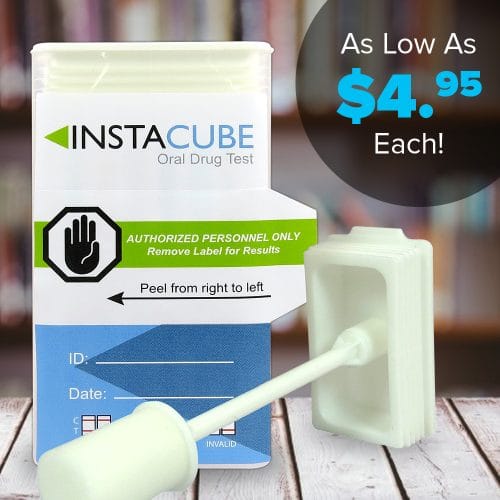Addiction medicine has evolved considerably over the past decades, adapting to the changes in substance misuse patterns, increasing knowledge about addiction, and advancements in diagnostic tools. One such diagnostic tool of immense importance is drug testing. When used appropriately, it plays an essential role in aiding the identification, diagnosis, and treatment of substance use disorders (SUDs). This blog post aims to provide a comprehensive overview of the role of drug testing in clinical addiction medicine, including its use in rehabilitation and its importance in various treatment approaches.
Understanding Clinical Addiction
Clinical addiction, also referred to as substance use disorder, is a chronic medical condition characterized by an uncontrolled use of one or more substances leading to health issues, disability, and failure to meet major responsibilities at work, school, or home. According to the American Psychiatric Association, substance misuse can lead to both physical and psychological dependence, with significant impacts on the brain’s reward system.
This transformation is particularly destructive as it changes an individual’s ability to prioritize and value important aspects of their life and routine, often leading to negative consequences, including health problems, issues with personal relationships, and legal troubles. For addiction medicine practitioners, the main goal is to diagnose these disorders accurately, guide the patients towards recovery, and prevent relapses.
Drug Testing in Addiction Medicine
Drug testing is a critical component of addiction medicine. It is used for various purposes, including initial diagnosis, monitoring patient progress during treatment, verifying abstinence, detecting relapses, and aiding legal and employment-related decisions. In a clinical setting, drug tests can detect a range of substances, including alcohol, amphetamines, barbiturates, benzodiazepines, cocaine, opioids, and marijuana, and many more substances.
Tests can be performed using different biological specimens like urine, blood, saliva, hair, and sweat. Each type of test has its benefits and drawbacks. For example, urine tests are widely used due to their cost-effectiveness, easy administration, and ability to detect substance use over the past few days. Hair tests, on the other hand, can provide a longer detection window up to 90 days, while blood tests can give accurate, albeit short-term, detection.
When applied judiciously, drug testing can provide valuable information, contributing to a more accurate diagnosis, individualized treatment planning, and objective outcome monitoring. However, it’s important to note that drug testing is not standalone evidence of a substance use disorder. Clinicians should integrate results with other clinical findings and always consider the context of the individual’s overall health and life situation.
Drug Testing for Rehab and Addiction
In the context of rehabilitation centers and recovery programs, drug testing is a vital tool. Regular testing can help track a patient’s progress towards recovery, identify potential triggers for relapse, and adjust treatment plans accordingly.
These tests provide an objective measure of substance use and aid in creating a culture of accountability within the recovery community. Despite its utility, it’s crucial to balance the need for monitoring with respect for the patient’s privacy and dignity. Involuntary or punitive testing can harm the therapeutic alliance and potentially deter individuals from seeking help.
Drug testing in rehab facilities serves as an important part of treatment plans and recovery processes. It is a valuable tool in tracking a patient’s progress, identifying potential triggers for relapse, and adjusting treatment plans accordingly. But how are these tests optimally utilized in a rehab setting? Let’s take a more in-depth look.
Initial Assessment
When a patient first enters a rehab facility, comprehensive assessment is the primary step in forming an individualized treatment plan. Drug testing can offer an objective confirmation of the substances the patient has been using. This insight assists the clinicians in determining the severity of the addiction and designing the most appropriate detoxification and treatment strategies.
Monitoring Progress
During treatment, routine drug testing is often used to monitor patients’ progress. It helps verify whether patients are abstaining from drug use and complying with their treatment plans. Positive results might suggest a need for adjustments in the treatment protocol, and the clinicians can then discuss these results openly with patients, involving them in decision-making and reinforcing the shared responsibility for recovery.
Accountability and Motivation
Drug testing in rehab can also promote a culture of accountability. Knowing they will be routinely tested can provide an extra layer of motivation for individuals to maintain their commitment to sobriety. It can also serve as a deterrent to potential substance use within the facility.
Aftercare and Relapse Prevention
Even after completing their initial treatment program, individuals recovering from substance use disorders often require ongoing support to maintain sobriety. Random drug testing can be part of an aftercare program, helping to prevent relapse. It serves as an objective tool for self-assessment and a reminder of the commitment to recovery.
While drug testing plays an essential role in rehab facilities, it’s important to note that the frequency, type, and manner of testing should be respectful and non-punitive. Mandatory or surprise testing without prior knowledge or consent can harm the therapeutic relationship, potentially deterring individuals from engaging fully in their recovery process.
Moreover, a positive test result should not be met with punishment but instead viewed as an opportunity to reassess and adjust the treatment plan. Understanding the circumstances leading to relapse and providing additional support can be far more beneficial in long-term recovery.
The goal of drug testing in rehab should be to aid recovery, support the patient, and enhance the effectiveness of the treatment program. The best practices involve using drug testing as a therapeutic tool rather than a disciplinary measure, always maintaining a focus on the ultimate goal: a successful, sustained recovery.
Treatments for Addiction
The primary goal of addiction treatment is to help individuals stop using substances and achieve lasting abstinence while improving their functional capabilities. Treatment modalities for addiction are typically multi-faceted, addressing the complex nature of addiction and its far-reaching effects.
They often include behavioral therapies (like cognitive-behavioral therapy and motivational interviewing), medication-assisted treatment, peer support groups, and family counseling. Drug testing plays a role in many of these treatment approaches, particularly in medication-assisted treatment, where it can monitor adherence to prescribed medications and detect any non-prescribed substance use.
Drug testing is an indispensable tool in clinical addiction medicine when used appropriately. It provides crucial information to diagnose substance use disorders, monitor treatment progress, and promote accountability in recovery. Yet, it must be used responsibly, in conjunction with other diagnostic tools and treatment strategies, and always respecting the dignity and rights of individuals seeking help.
As the field of addiction medicine continues to evolve, it will be important to further refine drug testing protocols and guidelines, keeping pace with emerging substances of abuse and advancing detection technologies. By doing so, we can ensure that drug testing continues to play its part in the journey towards recovery.



